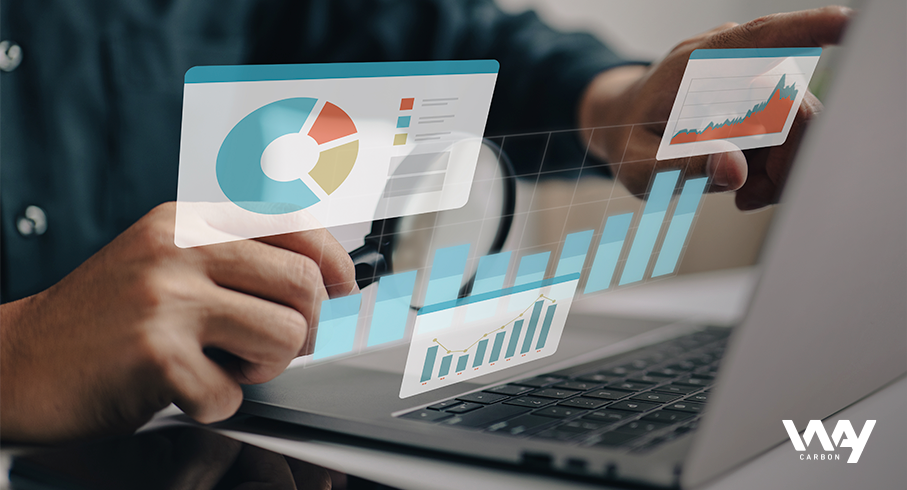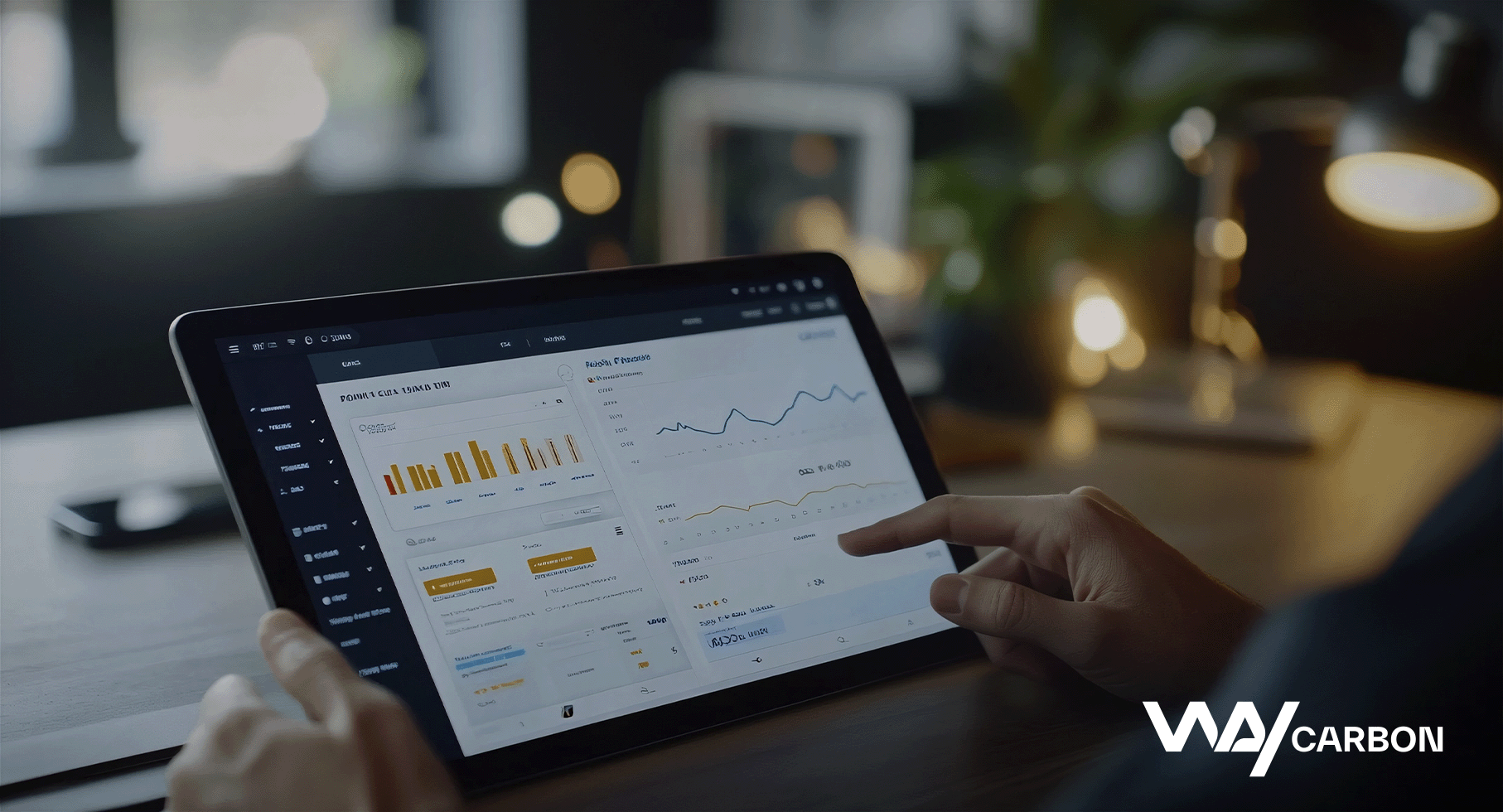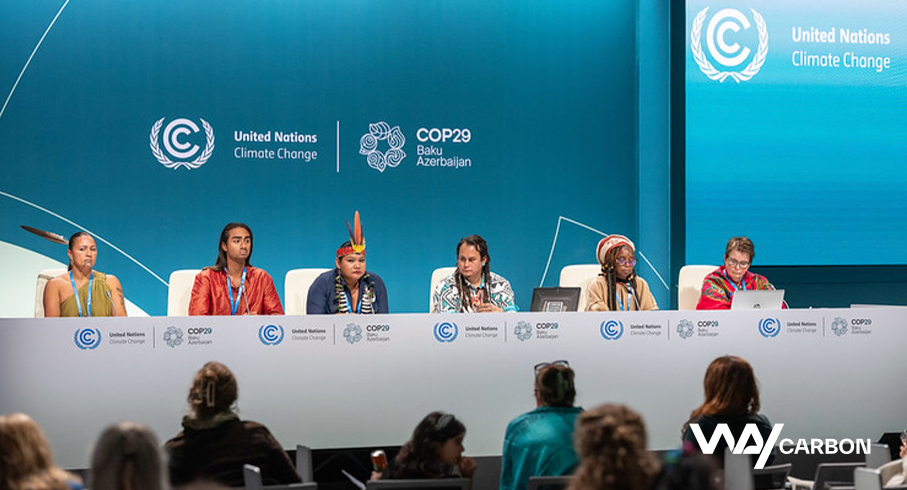8 reasons to make your carbon inventory with Climas
The impacts of climate change in the medium and long term have been gaining ground in debates in the global public and private spheres. The sequence of letters from Black Rock’s board: on profit and purpose (2019), structural change in finance considering climate risks (2020), purpose and climate change (2021) and stakeholder capitalism (2022), set the tone and tenor of these debates. This emphasizes the relevance that the topic has gained within the global financial markets.
Another milestone was the report from the Intergovernmental Panel on Climate Change (IPCC) in 2021, which pointed to the seriousness of the climate crisis with a forecast of a 1.5 ºC increase in global temperature over the next two decades.
To reduce the impact of human actions on the planet and meet the demands of the market, boards of directors and consumers, the action of reporting and reducing greenhouse gas emissions (GHG) has entered the radar of corporations. In this context, the carbon inventory has become the main source of information, guiding the organization’s internal initiatives on the climate agenda, as well as giving external visibility to different stakeholders
What is a carbon inventory?
The GHG Emissions Inventory or Carbon Inventory is a document that makes it possible to map, quantify and record the sources of emissions from an activity, sector, organization or site. It is divided into direct emissions (scope 1: from sources that belong to or are controlled by the inventorying entity) and indirect emissions (scopes 2 and 3: linked to energy consumption and emission sources that are the responsibility of external parties, respectively). In addition to the sources of GHG emissions, the report identifies the types of gases, targets, commitments, mitigation strategies and management tools used, among other points.
Originating from the need to quantify emissions generated after the Kyoto Protocol in 1997, the carbon inventory had its first consolidated methodology in 1998 in the United States, with the establishment of the Greenhouse Gas Protocol (GHG Protocol) tool. Later on, guidelines for its completion were created by the Intergovernmental Panel on Climate Change (IPCC) in 2006.
As it is a strategic and complex document, executing it manually, using only spreadsheets and emails, can lead to many errors, rework and doubts. Several areas and employees of an organization are involved, making it difficult to trace and verify data without an appropriate tool.
Aware of these challenges, WayCarbon, with over 15 years’ experience in the ESG agenda and Climate Change, has developed the Climas software. The platform, a pioneer in the Brazilian market, makes it possible to carry out a GHG inventory and integrate the responses with the main reporting programs. More than just a report, with Climas, the inventory becomes a management tool and a thermometer of climate change within institutions. The solution is already used in 18 countries and various sectors by major clients such as: Dexco (Manufacturing), Gerdau (Steel), Latam (Transportation) and BTG (Financial Services).
Check out the benefits of developing a GHG inventory with the support of Climas:
- Integrated management, user-friendly, with automated and collaborative filling:
Collecting social, environmental and governance information usually involves multiple areas of a company or group, and can be done either through official records, such as tax data, or through documents that can be more difficult to ascertain, such as operation management reports and equipment supply control spreadsheets.
Climas responds to this demand by facilitating the collection of data between professionals from different departments and units of the institution, replacing management via spreadsheets and e- mails, as well as allowing the attachment of evidence, i.e. documents that prove the veracity of the data. This makes it possible to collect information in a decentralized manner and then consolidate it more accurately and efficiently, keeping records of data updates and controlling document versions.
The tool has features that meet the needs of all organizational levels: from the operational employee, who needs to feed in data quickly and productively, to the managerial employee, who requires visibility of the figures in order to make decisions and develop mitigation plans, for example. The tool also makes it possible to automate data entry via API integration with other systems, divide responsibilities and authorize different levels of access for users.
- Mapping emission sources:
When a company adopts Climas, WayCarbon’s team of experts maps its sources and sinks of GHG emissions. Carrying out this stage properly is essential for the quality of the inventory. Emission sources are physical units or processes that release a greenhouse gas (GHG) into the atmosphere. Examples include: internal combustion engines, electrical equipment, boilers, among others.
A sink, on the other hand, is a physical unit or process that removes greenhouse gases from the atmosphere. They originate mainly in biological processes, such as photosynthesis, but can also occur through technological applications, such as Carbon Capture and Storage (CCS) systems.
- Curation of emission factors:
Once the emission sources have been mapped and the respective data collected, the next step is to convert this information into greenhouse gas emissions. Climas has a database of around 30,000 emission factors validated by experts in agreement with national and international organizations, which are used to relate activity data to GHG emissions or removals.
They convert, for example, energy consumption in MW/h into tons of GHG. They can be derived from technically reliable databases, such as the IPCC and other official public registers, or developed in a customized way according to the company’s reality.
With the platform, the factors are regularly updated for the automatic calculation of the emissions inventory by the Climas technical team, in a transparent and verifiable way, relieving the team responsible for the client’s inventory: so that they spend less time on operational tasks and can focus on analytical activities.
- Dashboards, standardized or customized, with clippings and partial reports throughout the year:
Dashboards are very important management tools for companies to understand their emissions in depth, allowing them to navigate through different business units, emission sources, gases or periods. Climas already comes with a wide range of standardized dashboards, including to support the completion of quantitative questions in standard reports, such as CDP or GRI.
The solution increases visibility over past cycles, allowing continuous monitoring of emissions (whether weekly, monthly or annually) and the identification of deviations, waste or opportunities for process improvement.
With Climas, it is also possible to define customized dashboards with the most relevant indicators for the company, which favors the creation of mitigation plans and the assignment of those responsible to meet specific emission reduction objectives.
- Traceability, security and accuracy of information
Being able to trace the input data is essential to ensure transparency and accuracy of the results of an inventory. When producing the document, it is at least necessary to guarantee the origin of the number and the person responsible for supplying it. This is more difficult to do with spreadsheets alone. By using Climas, the company can centralize and trace the elements, with access so that internal and external audits can be carried out within the system, reducing costs and optimizing the work of the parties involved.
Climas also allows inventory versions to be compared, whether due to changes in emission factors by external bodies, the inclusion of new mapped sources or even changes in the company’s structure, such as the acquisition or discontinuation of a business unit.
- Financial management of carbon credits:
In 2021, Climas launched a new Offsetting Management module, focused on managing the acquisition and retirement of carbon credits. The functionality makes it possible to record all credits acquired by the inventory holder, including the type of credit, volume of emissions, prices paid, issue date and retirement date. The aim is to help companies apply credits more efficiently in financial terms, according to the evolution of their emissions (already accounted for by the Climas GHG module), and to avoid double accounting.
- Uses the main references, standards and methodologies on the market:
To structure the inventory, Climas uses the main standards and methodologies on the market as a basis and ensures that contracting companies have uniform responses from all their units. Currently, the most widely used standard is the GHG Protocol, compatible with ISO 14.064, based on extensive public consultation processes. The aim is to encourage companies and governments to understand, quantify and manage their GHG emissions.
- Implementation with technical and theoretical support from waycarbon experts:
Adopting a new tool like Climas helps to train the team, both in conceptual terms for drawing up the GHG emissions inventory and to deepen their knowledge of the company’s own processes. Thus, the parameterization stage is crucial for a good result – in terms of completeness of information and management models. For this reason, the Climas service team supports system users so that the company can achieve the maximum capacity that the tool can offer. And once parameterized, drawing up inventories for subsequent years becomes a much simpler task.
In conclusion
The implementation of Climas for the preparation of GHG emissions inventories:
- It allows the integrated management of GHG emissions via dashboards and reports with different views, guaranteeing the analysis capacity of managers and analysts.
- It facilitates the process of preparing data collection by different organizational units and business areas.
- It guarantees the greatest technical reliability of the results, through better mapping of emission sources, the use of scientifically correct methodologies and the application of emission factors collected from nationally and internationally recognized sources.
- It consolidates all the data and evidence in one place, facilitating the auditing process and making it easier to use the same information consistently in different reporting programs.
- It also allows you to manage offsettings.
References
¹ CDP. Disclosing Through CDP: The Business Benefits. 2019.

 EN
EN  ES
ES PT
PT


